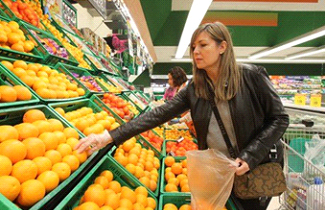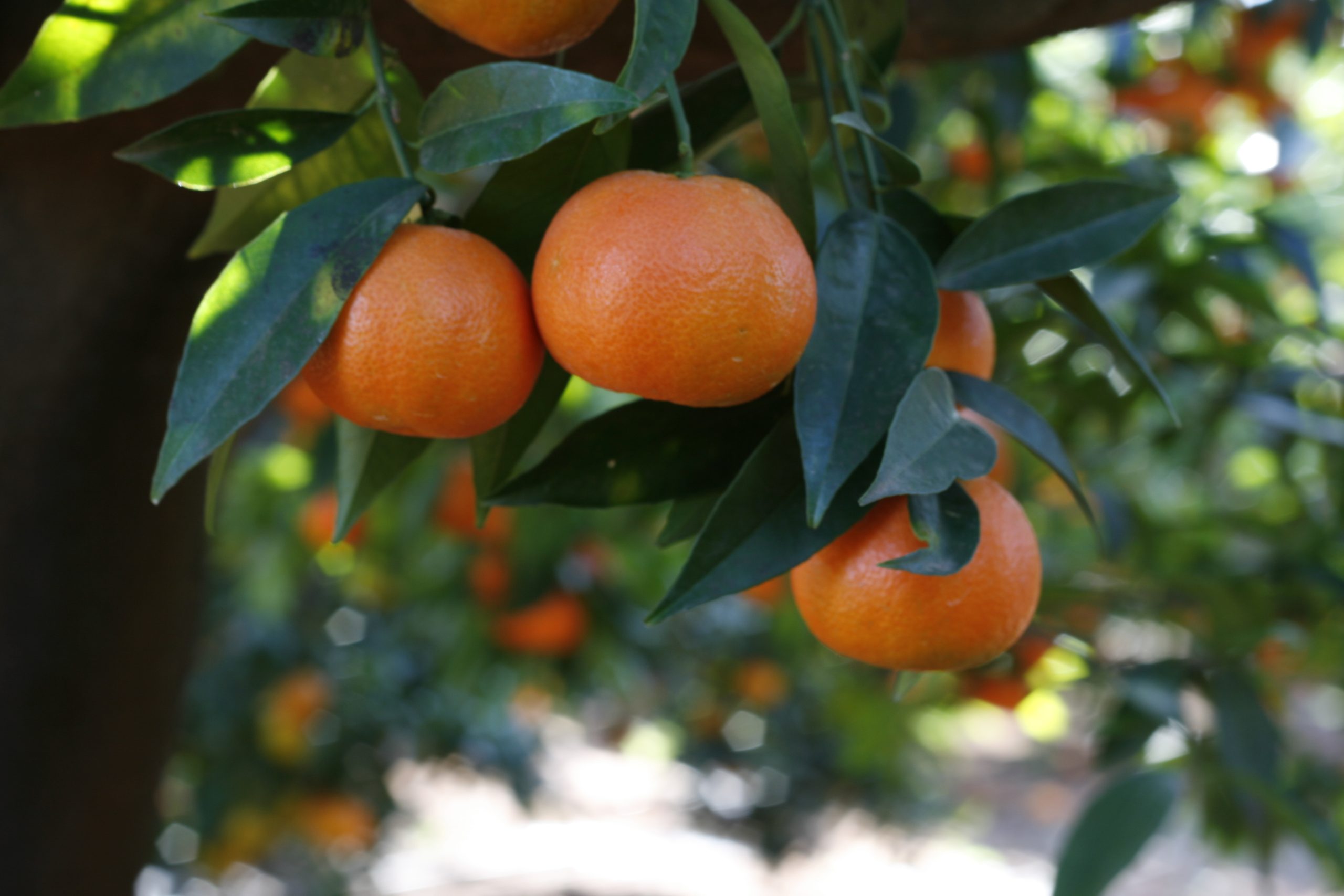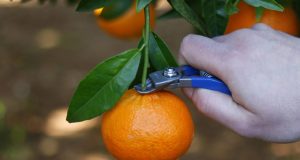At the time of harvesting, the fruit is separated from the tree and then undergoes a process of handling and transport to consumption. This process is of great importance as it will critically affect the final quality of the fruit that consumers will buy.
Of all this process that we have described, the most delicate moment will be the harvest, since it is when the fruit is exposed to greater dangers that can condition the final quality of the fruit.
Most of the rottenness seen in citrus packinghouses, and which in many cases reaches their customers, is mainly due to damage caused during harvesting. Therefore, reducing damage during harvesting will result in a significant reduction of these rots.
It must be taken into account that the final production cost of the fruit is the same regardless of whether it is well harvested or not, since all fruit will have a cost of production, harvesting, transport and handling. Therefore, any fruit that has a quality deficiency and has to be discarded will not provide any economic income to the company, while it will be a cost.
To achieve a better quality of citrus fruit, the following advice should be followed:
Do not harvest wet or damp fruit.
It is important that harvesting does not begin until the fruit is completely dry and no signs of moisture remain on the skin of the fruit.

When the skin is wet, it is easier to mark the fingers at the time of picking, as the moisture softens the skin.
When there has been a prolonged period of rain, if possible, it should wait a while before harvesting again to detect fruit affected by the fungus Phytophthora, since at first it is difficult to detect it and the danger of this fungus is that it can be transmitted to other healthy fruit by contact without any wound.
Another problem of harvesting with wet fruit is that the oil glands are fuller, so that any hit produces the rupture of these glands and the release of essential oil, thus increasing the likelihood of entry of pathogens.
Do not harvest the fruit by pulling.
It is very common in some countries to harvest by pulling. The big problem of using this harvesting system is the breakage of the albedo tissues, closer to the peduncle, so that this area becomes a weak point where fungi such as Botrytis, Phomopsis, Diplodia, Phytophthora, among others, can be installed.
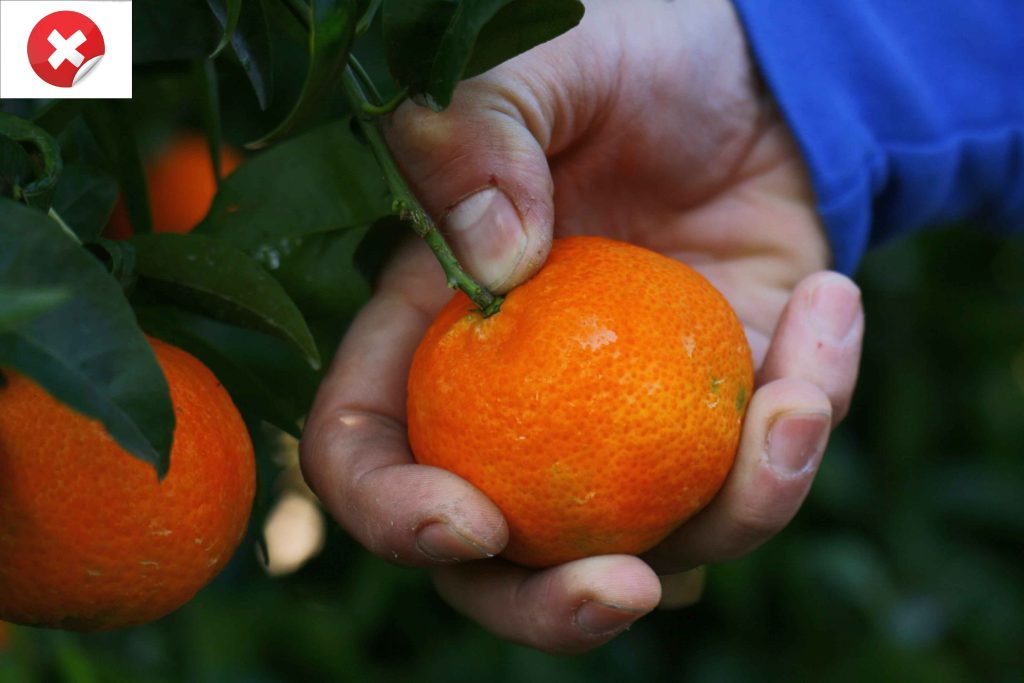
Another of the consequences of harvesting by pulling is the preservation of the fruit in the storage room, since a well harvested fruit can be kept in good condition for much longer.
In many cases, when the fruit is harvested by pulling, not only the calyx is pulled off, but often we can see that an important part of the skin has been pulled off, turning this fruit into direct loss.
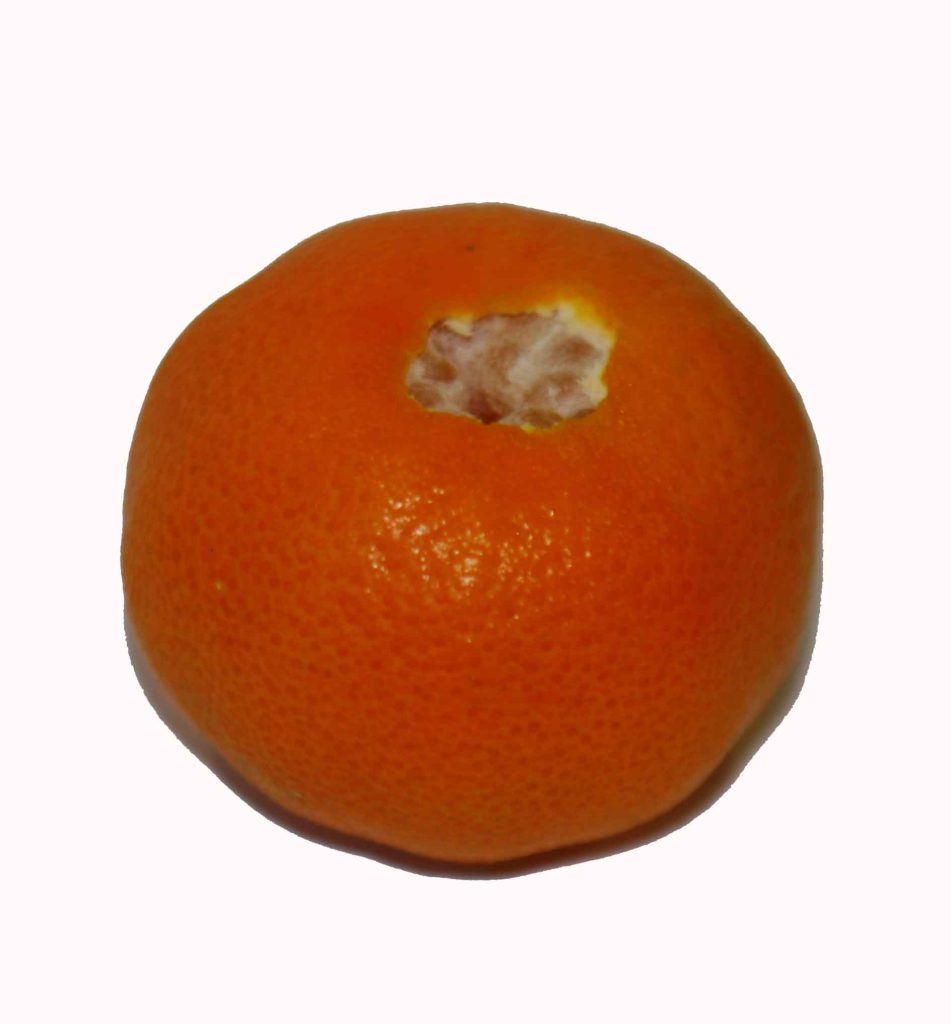
For this reason, the use of specific clippers to avoid damaging the fruit is already a common practice in most citrus packing stations, because these companies have already proven with their losses the consequences of the pull harvesting.
The characteristics of the clippers are very important, since the use of an unsuitable tool can cause a significant number of wounds in the skin of the fruit that can turn into rotting sooner or later.
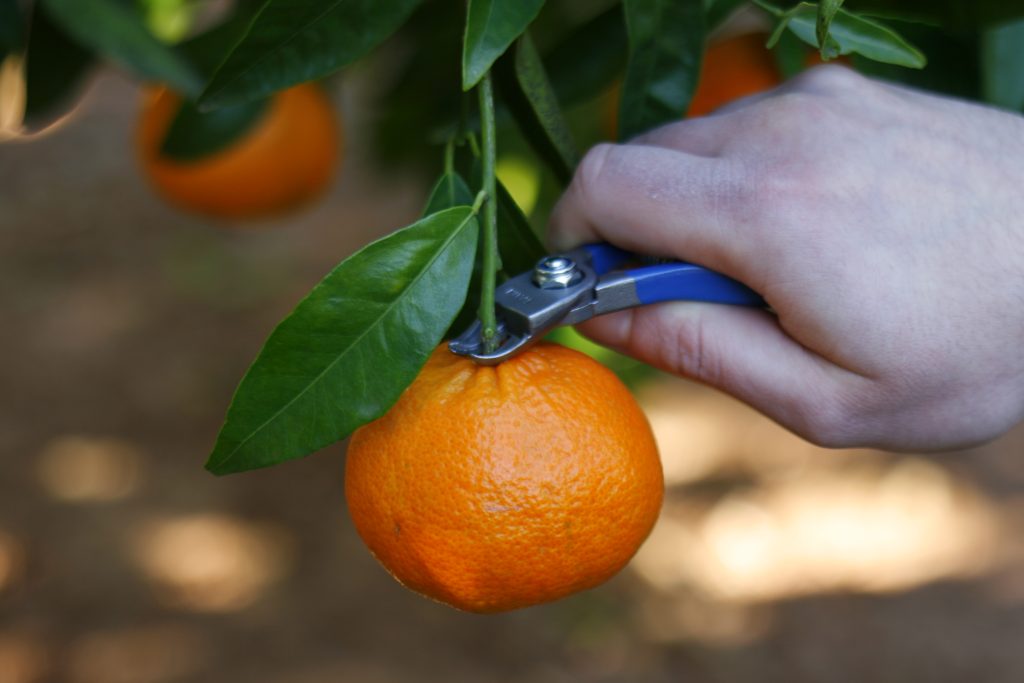
Therefore, the clippers should have curved and rounded tips to avoid punctures, and an enhancement on the counter-blade to avoid scratching the skin of the fruit.
It is also important to cut the stalk as short as possible, to avoid puncturing other fruits during handling and transport.
Avoid causing wounds.
During harvesting, as mentioned above, is where the loss of fruit quality can have the greatest impact. Therefore, it is important to comply with certain practices to avoid producing injuries to the fruit that will later become rotten due to the entry of some types of fungi such as Penicillium or Geotrichum.
Some of the actions that can cause injuries to the fruit and should be avoided are the following:
- Throwing the fruit into the harvesting container from a certain height. It is advisable to leave the fruit as close to the container as possible. It is also advisable to put a foam bottom to cushion.
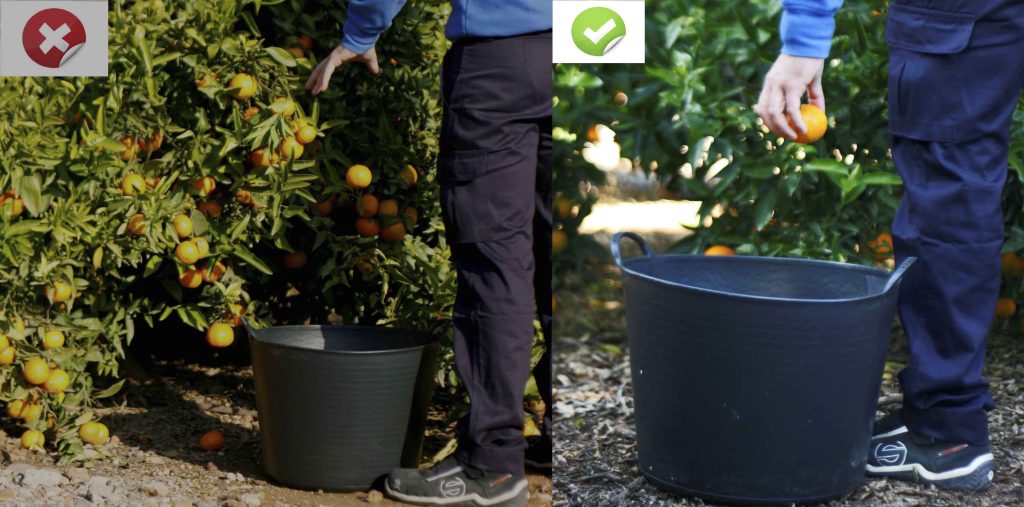
- Tipping the fruit from the harvesting container into the transport boxes without due care.
- Do not nail or press the fruit too hard during harvesting.
Do not pick fruit from the ground.
Fruits on the ground, especially those affected by some kind of rot, should not be picked as these can affect to the healthy fruits.

It should also be taken into consideration that the fruits on the ground, at least have received an impact when falling, the tissues will be weaker and have contact with the fungi on the ground; so they will have a very high probability of rotting.
Transporting fruit from field to packing station.
Fruit should be protected from rain and sun, so it is recommended to transport it as soon as possible to the packing house.
The person responsible for loading should take into account the following issues:
- The height of the fruit inside the boxes should not exceed the height of the box, since loading some boxes on top of others would crush the fruit.
- If the peduncle of the fruit is left long, due to the bumps and blows that the fruit receives during transport, some fruit would be punctured with others.
- The fruit should be well secured during transport and the boxes should never be fixed on the fruit itself.
- The circulation of the truck should be at an adequate speed for each type of terrain through which it passes. Excessive speed can cause the fruit to suffer unnecessary friction, at the very least.
All these tips have a purpose, and that is to ensure that the quality of the fruit on the tree can be maintained throughout the post-harvest process until it is marketed. This will allow a higher profitability of citrus production.
